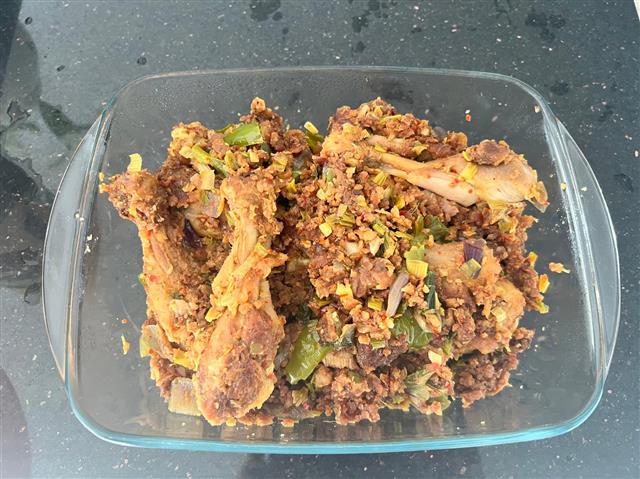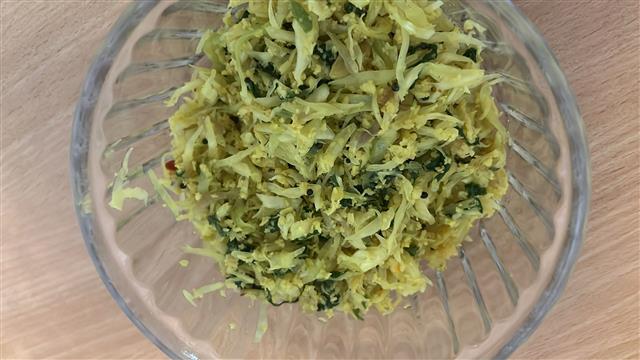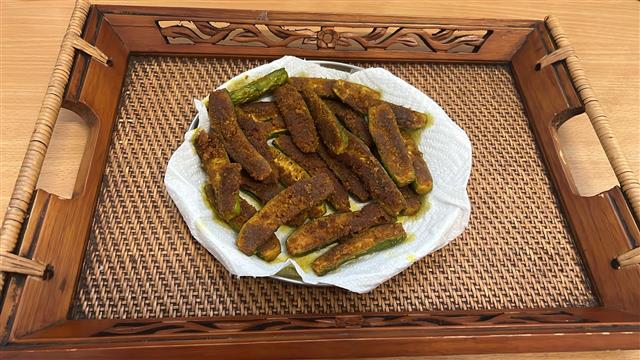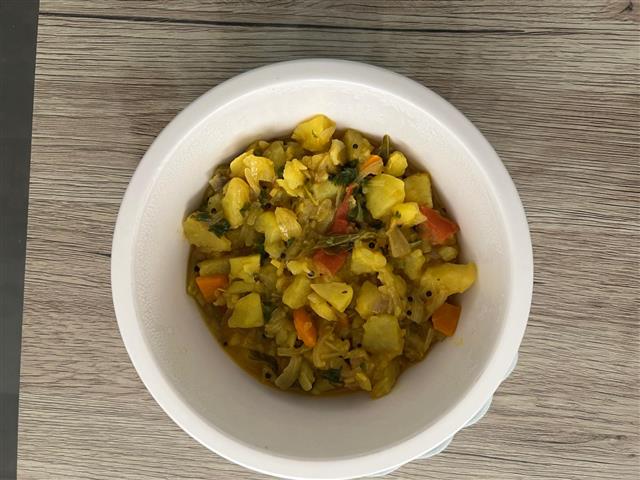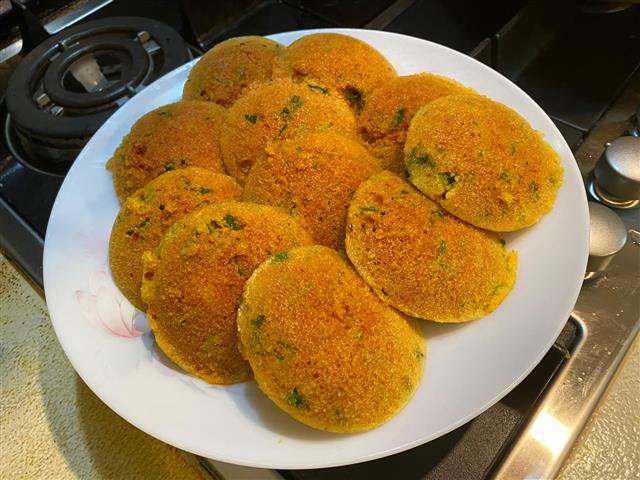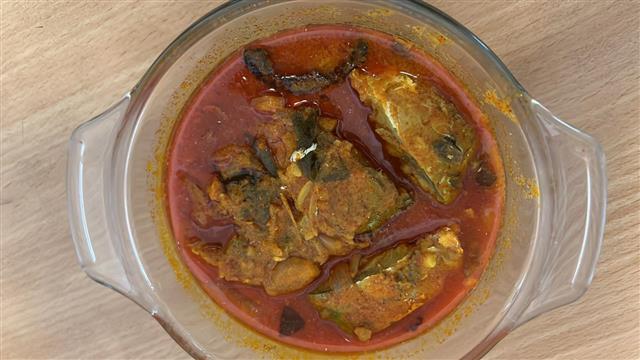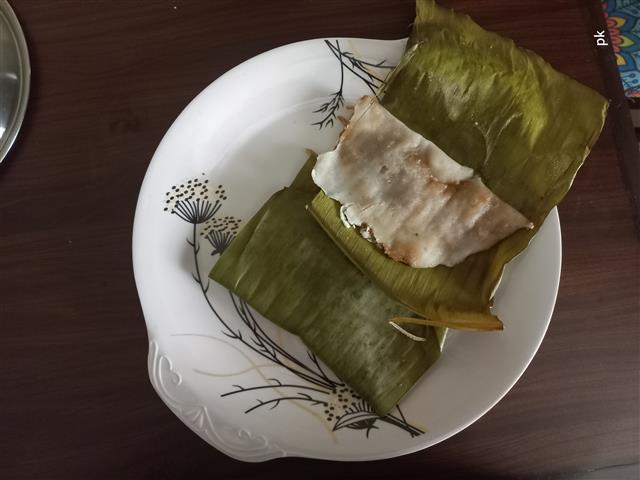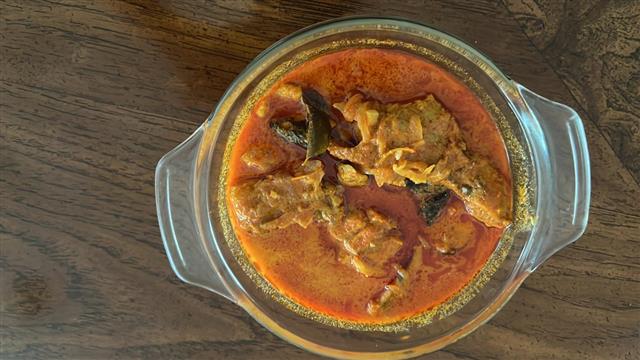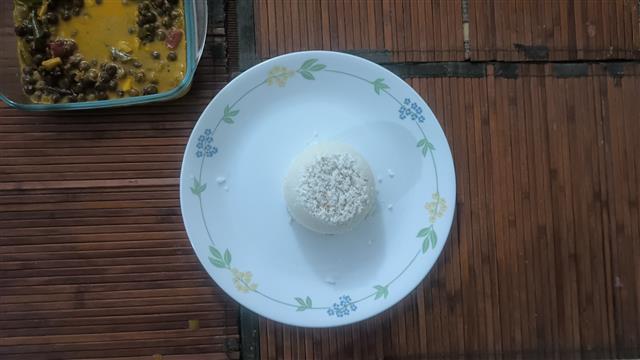
Fish Fry
(4 reviews)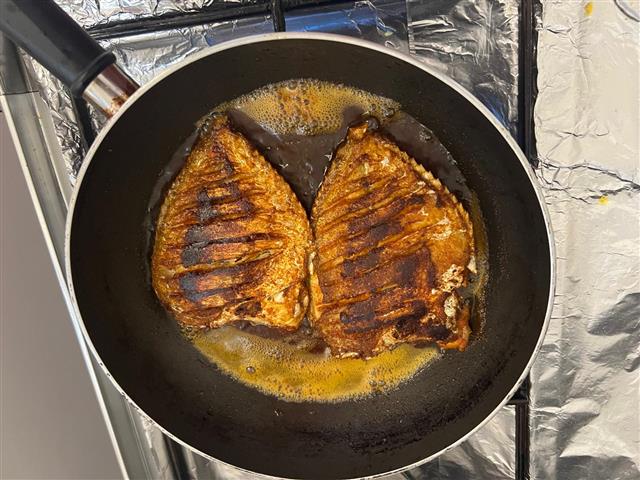
Kerala-style Fish Fry, or Meen Varuthathu is a dry preparation where fish is coated in a spice paste and pan-fried.
It's not a batter based fish fry. Traditionally coconut oil is sued which brings a nutty aroma that defines the dish. There are many ways to fry fish across Kerala but this version is basic, flavourful, and perfect with rice.
While some type of a fish dish is cooked daily in most Kerala homes, this fish fry is saved for a weekly or weekend lunch.
Ingredients
Directions
- Wash and clean the fish.
- For the paste, add coriander powder, chilli powder, turmeric powder, pepper powder, ginger garlic paste, fennel seeds, salt, lemon juice. Grind it to a thick paste.
- Slather well on both sides of the fish. Marinate the fish for 30 minutes to 2 hours.
- Heat coconut oil in a deep kadhai or uruli to medium heat, it should cover the fish halfway.
- Pan fry the fish in oil until a dark golden brown.
Cooking Tips
• Use thick, firm fish slices
• Pat the fish dry before applying the masala. This helps the paste stick.
• Don't add too much water while grinding the paste. It should be thick and cling to the fish.
• Always fry on medium heat. High heat will burn the spices. Low heat will make the fish soggy.
• Flip only once or twice during frying to avoid breaking the fish.
Marination Tips
• The marinade should be a thick paste. if it's too thick, add a teaspoon of water to thin it out.
• Let it rest in a covered bowl or plate for a minimum of 30 minutes.
• You can keep it overnight in the fridge and cook it the next day.
How to Serve
• With matta rice
• With Kerala-style moru curry ** or cheera thoran
• With sliced onions and lemon wedges fora light lunch or dinner
• Wrap it in banana leaf for lunchbox with rice
The Story Behind Fish Fry
This is the typical version of Kerala fish fry. This recipe is commonly made with seer fish, pearl spot, King Ffsh or pomfret. It's often served as a quick main or even as a starter dish.
The fish is marinated in a thick, red masala made from chilli powder, coriander, turmeric, pepper, ginger-garlic, and fennel seeds. After resting for a couple of hours, it's pan fried fried in hot coconut oil until the crust crisps up and the inside stays juicy. The result is sharp, spicy, and best eaten hot with rice and a squeeze of lemon.
This is not the same as the more delicate meen pollichathu, where fish is coated in a masala, wrapped in banana leaf, and shallow-fried till it steams gently inside.
And it's nothing like a slow-simmered Kerala fish curry, which uses coconut or kudampuli. This fry is all about instant heat and texture.
The first time I made it, I was nervous to cook it. I remember flipping too often and and losing some of the crust int he process, but it still tasted amazing. Over time, I learned to let it sit in the oil undisturbed and let the masala do its work. That crisp masala layer has become my favourite part.
What type of fish to use?
For fish fry, white-fleshed fish works best as they have a milder flavour and can be fried crispy. Seer fish, King fish or Pomfret are generally preferred. Other options include tilapia, Indian sea bass and pearl spot.
Ingredient Spotlight
→ Fish Fresh ones are the star of the dish with fillet for frying. Their flesh stays moist inside while the masala crisps on the outside.
→ Red Chilli Powder Adds both colour and heat. Use regular chilli powder for spice, or mix with mild Kashmiri chilli for a vibrant red hue
→ Coconut Oil
This isn't just for frying as it provides the taste and aroma to the whole dish. It also gives the crust its distinct, toasty flavour.
Regional Variations
Malabar often uses green masala with coriander leaves and shallots, especially for pomfret.
Kochi homes use more fennel and sometimes a dusting of rice flour for crispiness.
Travancore leans towards a wrapped in banana leaf version, sometimes with tomato-onion masala.
Pro Tips for Perfect Results
→ Marinate the fish for better flavour
→ Want extra crust? Lightly dust the fish with semolina or rice flour before frying.**
→ Heat oil to medium This allows the fish to fry perfectly, neither overcooked nor undercooked
Fish Fry Variations
- With rice flour
Add ½ tsp of rice flour to the masala paste if you want a crispier crust.
- With curry leaves
Mix crushed curry leaves into the paste or fry a few in oil for garnish.
- With desiccated coconut
Add roasted coconut flakes while serving for added texture.
- Spicier version
Add a touch of green chilli paste or crushed dried red chillies to the masala.
Diet-Friendly Adaptations
Low oil: Use an air fryer or non-stick pan with minimal oil, though the flavour will vary. Grilled version: Place marinated fish on a grill pan or bake at 200°C for 12 to15 mins after brushing with oil.
Storing & Reheating Tips
→ Fridge: Cool completely and store in an airtight box in the fridge. Use within 2 days.
→ Reheat: Lightly reheat in a pan with a splash of oil or toast it on a tawa till warm.
Tip: Don't microwave as it makes the texture rubbery and dulls the spice.
→ Freeze: Freeze the marinated fish and not the fired fish.
Common Mistakes to Avoid
→ Using water in the paste It makes it runny and the masala slips off. Add water only if the masala is too thick.
→ Overcrowding the pan The fish steams instead of frying.
→ Turning the fish too soon It breaks apart or loses its crisp crust.
→ Using refined oil Coconut oil adds authentic flavour and aroma.
→ Not marinating the fish The masala doesnt stick well to the fisha nd the flavours don't mix in
Frequently Asked Questions
- Can I use frozen fish?
Yes, but thaw fully and pat dry before marinating. Ice crystals will dilute the masala.
- What if I don't have coconut oil?
You can use any neutral oil, but coconut oil gives the signature Kerala taste.
- Can I make this ahead?
Yes. Marinate and refrigerate up to 12 hours in advance. Freeze for a couple of weeks. Fry just before serving.
- What's the best fish for frying?
Seer fish (neymeen), pearl spot (karimeen), or pomfret work beautifully.
Equipment Needed
→ Wide bottomed frying pan or Uruli Thick-bottomed steel or nonstick pan works too.
→ Slotted Spoon for frying the fish and removing it
→ Measuring Spoons
→ Small Bowl – For mixing spices
→ Mixer grinder or spice grinder For grinding fish masala
→ Kitchen Towel or tissue Paper - to drain excess oil
